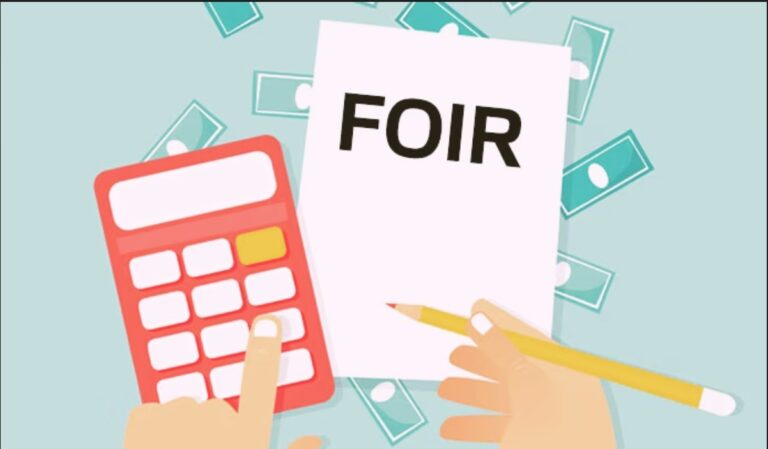Promissory Notes
Covered under the Negotiable Instrument Act, a promissory note offers a legal value to any transactional contract. It comprises two parties namely, the borrower and the payee, and the former agrees to pay a certain sum of money to the latter under different terms and conditions. Technically, a promissory note is a signed promise that specifies that the amount will be paid within the pre-determined time, failing to do so can lead to a penalty or legal obligation.
What is a Promissory Note?
A promissory note represents a binding contract in which the debtor promises to repay a designated amount to the creditor, adhering to agreed-upon terms. Widely utilized across the real estate, banking, and business sectors, the promissory note falls under the governance of the Negotiable Instruments Act of 1881, acting as proof of legal disagreements.
Definition and Purpose of a Promissory Note and Promissory Notes in the Indian Financial Context:
A promissory note is a formal financial document where one party promises to pay another a specific sum of money at a predetermined date or on demand. It serves as a legally enforceable commitment, facilitating borrowing and lending by providing a clear record of the debt and its conditions. In India, promissory notes are vital under the Negotiable Instruments Act, of 1881, ensuring their negotiability and legal validity. They are widely used in both commercial and personal finance, streamlining transactions by offering a secure method for managing loans, payments, and investments, thus playing a crucial role in the country’s financial infrastructure and economic activities.
Legal Standing and Historical Background:
Promissory notes in India hold a crucial legal standing, backed by the Negotiable Instruments Act of 1881. Historically, these instruments have facilitated trade and commerce by allowing borrowers to promise payment to lenders in writing, thus serving as a formal IOU. The Act provides a legal framework, ensuring these notes are negotiable, meaning they can be transferred by endorsement. This legal recognition not only enforces the obligation of the payer but also ensures protection under Indian law, making promissory notes a reliable and enforceable method of securing short-term finance and settling debts. Their use reflects India’s rich commercial heritage and the legal system’s adaptability to evolving financial practices.
Key Characteristics of Promissory Notes:
Some of the key characteristics of Promissory Notes are listed below:
- Must be in writing, containing a clear, unconditional promise to pay a specified sum.
- Payment must be made either on demand or at a fixed, determinable future date.
- The specified amount must be clear and payable to the order or bearer, ensuring negotiability.
- Requires the maker’s signature to validate the commitment to pay.
- No need for stamping or government approval for validity.
- Legally binding and enforceable, providing security for both lenders and borrowers.
How do Promissory Notes Work?
Promissory notes are legal contracts that consist of a borrower’s commitment to repay a predefined amount to the lender as per agreed terms. The note comprises major details like the principal amount, interest rates, repayment method, etc. The promissory note is signed by both parties, which makes it a binding agreement. The note is legally applicable until the borrower pays back the sum. It offers a legal cover to the lender in case the loan becomes a default.
What’s included in a Promissory Note?
A Promissory Note encompasses crucial details defining a financial agreement. Here’s what it typically comprises:
- Principal amount loaned
- Interest rate
- Repayment schedule
- Maturity date
Additionally, it explicitly identifies:
- Borrower and lender
- Obligation for repayment
- Collateral, if any
- Governing law
- Agreed penalties for defaults or late payments
Signatures from both parties validate its legal standing, ensuring transparency and mutual understanding. This comprehensive outline safeguards the interests of all involved in the financial arrangement.
The Role of Trust in Financial Lending
Trust plays an important role in financial lending when it comes to the borrower-lender relationship. Lenders need assurance that borrowers will fulfil repayment obligations, and borrowers seek confidence in the lender’s integrity. Trust facilitates transparency, fostering open communication about terms and conditions. The presence of mutual trust also reduces the risk, enabling a better relationship between both parties.
Understanding the Essence of Trust in Personal Lending
In the realm of personal lending, trust is the foundational element that underpins the relationship between the lender and the borrower. This trust is built on the belief that the borrower will repay the loan following the agreed terms. It’s not just about the money; it’s about the confidence in each other’s words and integrity. The essence of trust in personal lending goes beyond contractual obligations, embodying mutual respect and ethical conduct. It’s this trust that facilitates smoother transactions, reduces the need for rigid formalities, and often enables lending even in the absence of collateral.
Common Issues Arising from Verbal Agreements:
Verbal agreements, while built on trust, often lead to several issues due to their inherent lack of formality and documentation. The primary issue is the difficulty in proving the terms of the agreement in the event of a dispute. Without written evidence, it becomes a matter of one person’s word against another’s, making it challenging for either party to establish the agreement’s specifics legally.
The absence of a formal agreement also makes it hard to enforce terms legally, should the borrower refuse to repay the loan, thereby significantly increasing the risk for the lender.
Types of Promissory Notes:
There are five types of promissory notes, and each of them has a different use and is bound by legal obligations. Go through the section below to know more details about the same.
1. Simple Promissory Note
A simple promissory note is a simple agreement that defines the borrower’s promise to repay a certain amount without complicated terms or conditions. Simple promissory notes are commonly used for personal loans between friends or family, where a basic, easy-to-understand arrangement is applicable.
2. Demand Promissory Note
This type of note provides flexibility to the lender, allowing them to demand repayment at any time. It is often used in situations where the lender wants the option to call in the loan on short notice, making it suitable for short-term financial arrangements.
3. Instalment Promissory Note
Unlike a lump-sum payment, an instalment promissory note establishes a structured repayment plan. Borrowers make regular payments over a specified period, easing the financial burden, and are commonly used for larger loans such as mortgages or business loans.
| Also, check: MSME / SME Loan |
4. Secured Promissory Note
This type offers collateral to secure the loan, typically an asset of value. By providing a tangible asset for repayment, secured promissory notes reduce the lender’s risk. In the event of default, the lender has the right to seize the specified collateral to recover the outstanding amount.
5. Unsecured Promissory Note
Unsecured promissory notes lack specific collateral but include the borrower’s creditworthiness. These notes are common for personal loans and credit arrangements but may come with higher interest rates to compensate for the high-risk factor.
Secured vs Unsecured Promissory Notes:
| Factors | Secured Promissory Note | Unsecured Promissory Note |
| Collateral Requirement | Requires specific assets as collateral to secure the loan. | No specific collateral is pledged to secure the loan. |
| Risk for Borrower | Lower risk for the borrower, as collateral provides security for the lender. | Higher risk for the borrower, as there’s no specific collateral protection. |
| Risk for Lender | Lower risk for the lender, as collateral, provides a source for repayment in case of default. | Higher risk for the lender, relying solely on the borrower’s creditworthiness. |
| Interest Rates | Typically, lower interest rates, reflect the reduced risk for the lender. | May have higher interest rates to compensate for the increased risk. |
| Approval Process | Easier approval process, as collateral provides security for the lender. | May have a more stringent approval process due to higher risk. |
| Common Examples | Mortgage loans or auto loans (secured by the vehicle). | Personal loans, credit cards, or student loans, are typically unsecured. |
Single vs Joint Borrowers: What’s the Difference?
There is a huge difference between a single and joint borrower, and one can relate to the same by referring to the table below:
| Factors | Single Borrower | Joint Borrowers |
| Definition | One individual or a single entity borrows the funds. | More than one individual borrows the funds. |
| Responsibility | The single borrower is responsible for repaying the entire debt. | Each individual is responsible for paying the debt in the proportion decided. |
| Credit Assessment | Assessed based on individual credit history. | Assessed collectively, taking into account the credit histories of all joint borrowers. |
| Income Consideration | The repayment relies on the income of the individual borrower. | Combines the incomes of all joint borrowers to assess repayment capacity. |
| Liability | Only the single borrower’s assets are considered in case of default. | All joint borrowers’ assets are considered, and each is individually liable for the entire debt. |
Key Elements of a Promissory Note:
The following are the major key elements of a promissory note and have to be specified to eliminate any unethical practices:
a) Written notes
A promissory note has to be in writing and must be drawn by either the lender or borrower. It can never be an oral contractual promise to pay money.
b) Express undertaking
The commitment that serves as the foundation of a promissory note typically needs to be explicit. More than simply implying an acknowledgement to pay and labelling it as a promissory note is required and can lead to irregularities.
c) Unconditional promise
The commitment to pay a specified amount of money must be highlighted in the promissory note. Therefore, a contingent promise cannot be the foundation for such notes. For instance, pledging to pay money only if one has it is considered a conditional statement and is not acceptable.
d) Specific amount
The main element of a promissory note is the amount that has to be paid to the lender. One has to specify the amount so that it cannot be changed in the future by either of the parties.
e) Legal tender
Lastly, the lender has to make a note of the money that has to be paid by the borrower. The amount has to be expressed in legal tenders like Rupees or Dollars.
The Legal Anatomy of a Promissory Note:
Go through the table to learn about the details related to promissory notes –
| Terms | Details of a promissory note |
| Parties Involved | Borrower – The person or entity borrowing the money and making the promise to repay.
Lender – The person or entity lending the money and to whom the repayment is promised. |
| Loan Amount | Specify the principal amount of the loan, which is the initial amount borrowed |
| Interest Rate | Agreed upon Interest Rate |
| Repayment Terms | Define the schedule for repayment, including the due dates for instalment payments (if any) and the final due date for the full repayment. |
| Maturity Date | The date on which the loan must be fully repaid |
| Payment Terms | > Payment Method
> Type of Payment > Late Payment Penalties |
| Collateral | If the loan is secured, specify the collateral offered by the borrower to secure the loan. This provides the lender with a source of repayment in case of default. |
| Signatures | Signature of both the parties and the witnesses |
Terms of Repayment Explained:
Loan Amount, Interest, and Repayment Schedules:
The terms of repayment for a personal loan are crucial for both the borrower and lender, detailing the financial obligations and expectations. The loan amount refers to the principal sum lent to the borrower, which is expected to be repaid in full. Interest is the cost of borrowing this principle, expressed as a percentage of the loan amount. It compensates the lender for the risk and opportunity cost of lending money. This schedule considers the loan amount, interest rate, and loan term, providing a clear plan for repayment and helping manage the borrower’s financial planning.
Understanding APR and Its Application in Promissory Notes:
APR, or Annual Percentage Rate, represents the true cost of borrowing, encompassing not just the interest rate but also any additional fees or charges associated with the loan, expressed as a yearly rate. In the context of promissory notes, the APR provides a more accurate picture of the loan’s total cost to the borrower. It allows for easier comparison between different loan offers by standardizing the way costs are presented. It’s a critical factor in making informed borrowing decisions, especially in assessing the cost-effectiveness of different loan options.
The Importance of Collateral in Secured Loans:
How Collateral Gives Assurance to Lenders
Collateral provides lenders with a security to secure the loan, reducing the risk of financial loss in case of borrower default. It serves as an assurance that, in the event of non-payment, the lender can seize and liquidate the collateral to recover the outstanding debt. This security enhances lenders’ confidence, enabling them to offer loans at more favourable terms, lower interest rates, and extended repayment periods.
Valuation of Collateral: Ensuring Adequate Security
Proper valuation of collateral is crucial to determine its fair market value and establish an appropriate loan-to-value ratio. Adequate security ensures that the value of the collateral sufficiently covers the loan amount, reducing the lender’s risk.
Consequences of Defaulting on a Promissory Note
1. Default Terms and Their Legal Implications
Defaulting on a promissory note can have serious legal and financial consequences for the borrower, largely defined by the default terms outlined in the note itself.
Legal Implications: Once a borrower defaults, the lender has the right to enforce the full repayment of the loan immediately, including any accrued interest and late fees, as per the acceleration clause commonly included in promissory notes. This can lead to legal action, where the lender may sue for the outstanding balance. If the promissory note is secured by collateral, the lender might also have the right to seize the collateral (e.g., property, vehicles) to recover the loaned amount.
2. Measures for Handling Late or Missed Payments
A lender is allowed to impose measures if he faces any late or missed payments through promissory notes. He can choose to charge a penalty or renegotiate the terms. To mitigate potential risks, one can choose to initiate legal actions. However, they should specify all of these terms and conditions earlier on the promissory note.
Issuance and Regulation of Promissory Notes in India
Section 4 of the Negotiable Instruments Act 1881
According to an original article discussing the legal framework of financial instruments in India, “As per Section 4 of the Negotiable Instruments Act 1881, a promissory note, bill of exchange, or cheque is payable to order which is expressed to be so payable or which is expressed to be payable to a particular person and does not contain words prohibiting transfer or indicating an intention that it shall not be transferable.” This underscores the Act’s stipulation on the negotiability of these financial instruments, highlighting the legal conditions under which they can be transferred.
Stamp Duty and Revenue Stamps: Compliance with the Indian Stamp Act
As per the Indian Stamp Act, a person who is issuing a promissory note can choose to stamp it. One can choose to affix a revenue stamp that has to be signed by the promissory. A Rs 1 revenue stamp cross-signed by the borrower applies to a promissory note
GST Implications on Promissory Notes
An 18% GST is applicable on promissory notes. This tax applies to the issue or handling fee applicable to the note.
The Lifecycle of a Promissory Note
From Execution to Expiry: A Timeline
The life of a promissory note begins with its execution, as it specifies the name of the borrower and lender along with the terms and conditions. It remains active until the specified repayment date or completion of repayment as agreed upon. Once the payment is done then the lender party can either retain it or cancel and return it to the borrower marking its end.
Cancelling and Returning the Note Post Repayment
After the borrower fulfils their repayment, it’s advisable to cancel and return the promissory note formally. This serves as a clear acknowledgement that the debt has been fulfilled. Cancelling the note not only prevents any accidental or unauthorized use but also signifies a sense of closure to both parties involved in the transaction. This final step is essential for maintaining accurate financial records and ensuring a transparent and well-documented lending process.
Best Practices for Lending Money Via Promissory Notes
The Ideal Way to Disburse Loan Amounts
The ideal way to disburse loan amounts ensures both security and convenience for both the lender and borrower, aligning with regulatory compliance and operational efficiency. Initially, a detailed agreement should outline the loan terms, including interest rates, repayment schedule, and any collateral. This agreement serves as a mutual understanding and is legally binding.
For transparency and traceability, disbursements should preferably be made through digital transactions. Electronic transfers, such as NEFT, RTGS, or IMPS in India, offer a secure, fast, and verifiable method of transferring funds directly to the borrower’s bank account.
Securing Loans with Crossed Account Cheques
Crossed account cheques elevate the loan security and minimize the risk of misuse by diverting the funds to the intended account. Crossed cheques provide an additional layer of protection, reducing the chances of unauthorized handling or misappropriation of the loaned amount. One can verify the authenticity of the cheque by mentioning its details in the promissory note can add an extra level of security to the lending process.
Witnesses in Promissory Note Transactions
The Role and Importance of a Witness
Witness in a Promissory Note thus playing a crucial role in verifying the authenticity of the same. The signature confirms that the parties involved in the contract are willingly agreeing thus adding credibility and strengthening the promissory note.
When and Why to Include a Witness Signature
One should include a witness signature in a promissory note to add legal weight to the same. One should also mention the document involved like significant sums or complex terms. The witness serves as an impartial third party, attesting to the voluntary nature of the agreement and enhancing the document’s reliability in legal proceedings.
How to Create a Promissory Note in India:
Step-by-Step Guide on Drafting Promissory Note
- Step 1: Start drafting your promissory note by mentioning the names of the borrower and lender
- Step 2: Next, mention the principal amount lent and specify the interest rates. Also, mention the repayment terms including the due date and instalment norms
- Step 3: Prescribe the interest calculation method and also mention the late payment penalties or charges along with the details of collateral
- Step 4: State the mode of repayment (e.g., bank transfer, cheque) and mention the address for sending payments.
- Step 5: Include all the specific details related to the terms and conditions related to the loan.
- Step 6: Mention the date and signatures and also when the promissory note along with the sign and date of the document.
Legal Recourse and Enforcing a Promissory Note
Legal Actions in Case of Non-Payment
When a debtor fails to fulfil the obligations outlined in a promissory note, the creditor possesses several legal avenues to enforce the agreement. The initial step often involves sending a formal demand letter to the debtor, outlining the default, and requesting payment within a specified timeframe. If this approach does not yield results, the creditor may escalate the matter by initiating legal proceedings.
Legal actions can vary depending on the jurisdiction but generally include filing a lawsuit to recover the owed amount plus any applicable interest and fees. During the legal process, the creditor may also seek remedies such as garnishment of wages, liens on property, or seizure of assets, subject to court approval. Creditors must act within the statute of limitations, which varies by state and dictates the timeframe within which legal action must be taken.
Seeking Legal Help: When and How
Seeking legal assistance becomes imperative when informal attempts to resolve the default are unsuccessful. Legal counsel can offer guidance on the viability of litigation, assist in drafting necessary documents, and represent the creditor in court proceedings. It’s advisable to consult a lawyer who specializes in debt collection or financial disputes, as they will be familiar with the nuances of promissory note enforcement and state-specific laws.
Engaging a lawyer early in the process can also help navigate any potential defences the debtor might raise, such as claims of fraud, duress, or that the note was altered. Additionally, legal professionals can advise on negotiation strategies for settlement agreements, potentially avoiding the need for a court trial.
Conclusion: Promissory Notes as Trust-Building Financial Instruments
Summary of Key Takeaways
Promissory notes serve as foundational instruments in financial transactions, symbolizing trust between the creditor and the debtor. They offer a clear, enforceable framework for the repayment of debts, including the principal amount, interest rates, and repayment schedule. While most agreements proceed without issue, the presence of a legally binding note ensures protection for both parties, providing a recourse in the event of non-payment.
Promissory notes are legal documents that define a borrower’s commitment to repay a specified amount to a lender under defined terms. They are regulated by the Negotiable Instruments Act of 1881 and serve as evidence in case of disputes. Available in five types, these notes offer legal binding to a transaction, thus safeguarding the lender’s interest.
The effective enforcement of promissory notes underscores the importance of due diligence and legal preparedness. By understanding the legal mechanisms available and seeking timely legal assistance when necessary, creditors can safeguard their financial interests and maintain the integrity of these agreements.
Frequently Asked Questions
Ques: What is the difference between a secured and an unsecured promissory note?
Ans: The major difference between a secured and an unsecured promissory note is that the former requires collateral whereas no such is required for an unsecured promissory note.
Ques: How is interest calculated on a promissory note in India?
Ans: The interest is calculated on a promissory note in India on APR (Annual Percentage Rate).
Ques: What happens if a promissory note is not repaid on time?
Ans: If a promissory note is not repaid on time then the lender can impose a penalty or can also take legal action against the borrower.
Ques: Are verbal promissory notes enforceable?
Ans: While oral agreements can be legally binding, proving the terms without a written document is challenging. Written promissory notes are strongly recommended for clarity and enforceability.
Ques: Can the terms of a promissory note be modified?
Ans: Yes, the terms of a promissory note can be modified, but any changes must be agreed upon by both parties and documented in writing.




